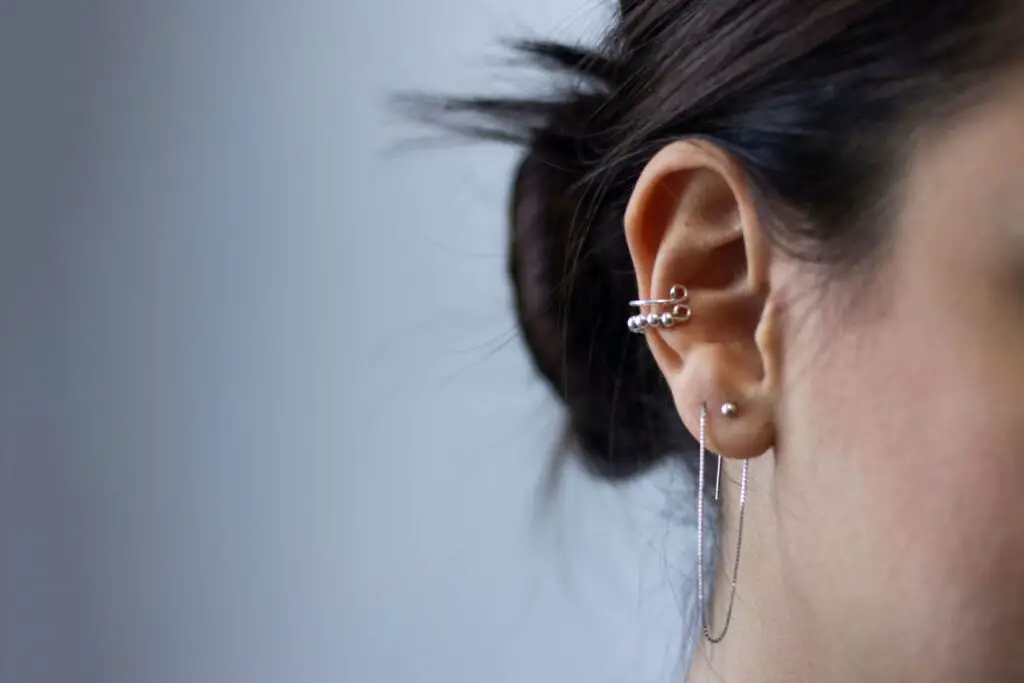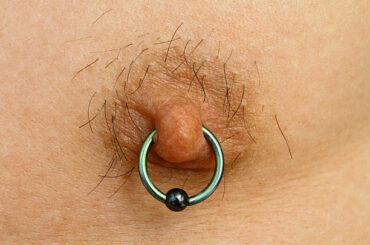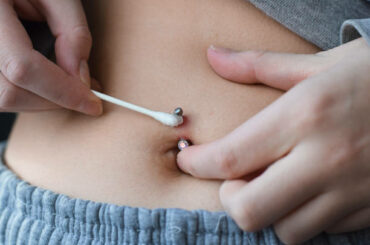When Can I Change My Lobe Piercing To A Hoop? When it comes to personal expression and style, few things are as exhilarating as getting a new lobe piercing. That little glint of metal or sparkle of a gemstone on the ear can offer a renewed sense of confidence, a dash of edginess, or a simple celebration of one’s uniqueness. Determining the right time to make this change can be crucial for the health and longevity of your piercing. This article delves into understanding that exact timeline and the various factors to consider to ensure your earlobe’s health and showcase that desired hoop.
Contents
Understanding Lobe Piercing Healing
The lobe piercing process, in essence, involves using a sterilized needle or piercing gun to create a small hole through the fleshy part of the earlobe. This procedure is generally considered less painful than other types of ear piercings, given the absence of cartilage in the lobe. Once the piercing is done, a starter earring, usually a stud, is inserted to keep the hole open during the healing process.
The general healing timeframe for lobe piercings is typically between 6 to 8 weeks. This, however, can vary based on several factors. It’s crucial to understand that while the surface of the piercing may seem healed within this period, the tissue inside can still be healing. Several factors can influence individual healing rates:
- Aftercare Practices: Diligent cleaning with saline solution and avoiding unnecessary touching can speed up the healing process.
- Body’s Natural Healing Rate: Just as some people heal faster from cuts and bruises, the same applies to piercings.
- Potential Irritants: Exposure to harsh chemicals, certain beauty products, or even frequent contact with dirty hands can delay the healing process.
- Jewelry Material: High-quality materials like surgical stainless steel or titanium can enhance healing, while cheaper materials might cause allergic reactions, prolonging healing.
Knowing the intricacies of the lobe piercing healing process and the influencing factors helps set the stage for a healthy and complication-free piercing journey.
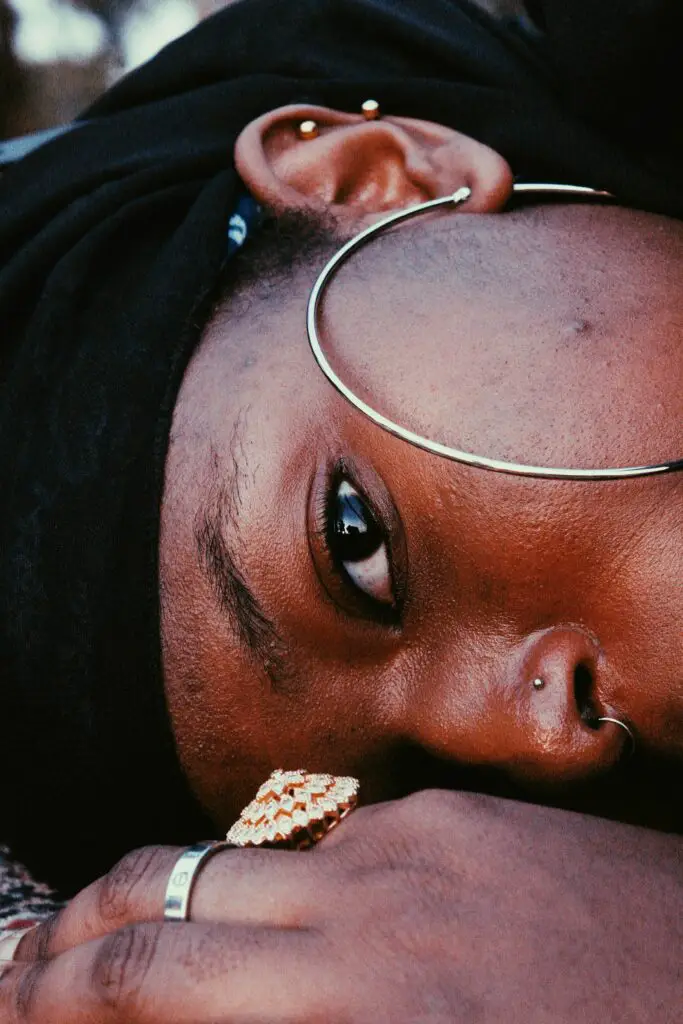
Signs of a Completely Healed Piercing
Recognizing a fully healed lobe piercing is essential, not just for the aesthetics of changing your jewelry, but also for the overall health of your earlobe. Understanding the difference between a piercing that’s merely “looking better” and one that’s genuinely healed can save one from complications down the line.
What Does a Healed Piercing Look and Feel Like?
- Appearance: A healed lobe piercing will no longer exhibit any redness or discoloration around the site. It should blend seamlessly with the rest of your earlobe, without any distinct color difference.
- Touch: When touched gently, the pierced area should feel smooth, without any bumps or raised skin. The touch should not induce pain, and the jewelry should rotate or move without resistance or discomfort.
- Sensation: There should be an absence of any throbbing, itching, or burning sensations. The pierced site should feel just like any other part of your earlobe, devoid of any heightened sensitivity.
Symptoms Indicating the Piercing Hasn’t Healed While it’s encouraging to note positive signs of healing, it’s equally vital to be aware of symptoms that indicate the opposite. If you observe the following symptoms, it might be a clear indication that your piercing hasn’t fully healed:
- Redness: Persistent redness around the pierced area suggests ongoing healing or potential irritation.
- Swelling: While some swelling is expected in the initial days post-piercing, prolonged swelling can be a sign of complications or slow healing.
- Pain: Pain or discomfort, especially when the jewelry is moved or touched, is a tell-tale sign that healing is still in progress.
- Discharge: While a clear, watery fluid (lymph) can be seen in the initial healing phase, the presence of yellowish, greenish, or cloudy discharge, especially accompanied by an unpleasant odor, might be a sign of an infection or prolonged healing.
Risks of Changing the Piercing Too Soon
The journey of a new piercing doesn’t end once you leave the piercing studio. The healing phase that follows is just as critical, if not more so, and making hasty decisions during this time can have lasting repercussions
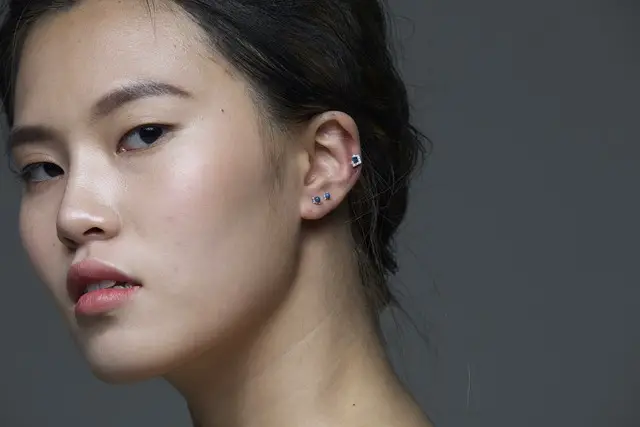
Potential Complications of Premature Jewelry Change:
- Infections: Introducing a new piece of jewelry before the piercing tract has fully healed can allow bacteria to enter the open wound. This can lead to infections characterized by pain, swelling, redness, and possibly a pus-filled discharge.
- Irritations: Changing the piercing too early can irritate the still-sensitive tissue. This can lead to complications such as keloids (raised scars) or granulomas (little red bumps).
- Piercing Closure: Particularly in the early stages of healing, the body can rapidly close an open wound. If you remove the initial jewelry too soon, even for a brief moment, you may find it nearly impossible to reinsert it, leading to the unfortunate closure of your new piercing.
- Tissue Damage: A premature jewelry change can harm the delicate healing tissues, causing tears or trauma that might prolong the overall healing time or result in unsightly scars.
The Virtue of Patience in the Piercing Healing Process:
In the world of piercings, patience truly is a virtue. While the allure of showcasing a trendy hoop earring is tempting, it’s crucial to give your body the time it needs. Ensuring full healing does more than just prevent complications; it sets the foundation for a piercing that can last a lifetime, with minimal issues in the future.
Moreover, waiting ensures that when you do finally make that jewelry switch, the experience is pain-free and seamless, allowing you to truly enjoy and celebrate your new look.
The Role of Jewelry Quality
When it comes to piercings, the jewelry you choose plays a pivotal role not only in aesthetics but also in the overall health and longevity of the piercing itself. The adage, “You get what you pay for,” rings especially true in this context. High-quality jewelry can make the difference between a piercing that heals beautifully and one plagued with complications.
The Significance of Choosing High-Quality Jewelry:
- Safety: High-quality jewelry is often made with hypoallergenic materials, reducing the risk of allergic reactions and other complications.
- Longevity: Durable, high-quality materials resist wear and tear, ensuring your jewelry remains in prime condition over time.
- Aesthetics: Premium jewelry often boasts better craftsmanship and finishing, providing a superior visual appeal.
- Comfort: Quality jewelry is designed with wearability in mind, ensuring comfort, especially in newly pierced areas.
Recommended Materials for New Piercings:
- Surgical Stainless Steel: Known for its hypoallergenic properties and durability.
- Titanium: Lighter than steel and completely nickel-free, making it a top choice for those with sensitive skin.
- Niobium: Another hypoallergenic option, it’s similar to titanium but with a wider range of colors.
- 14k Gold or Higher: Ensure it’s nickel-free. While gold-plated jewelry might be tempting due to its affordability, the plating can wear off, exposing the underlying metal which might not be suitable for fresh piercings.

Potential Problems with Low-Quality Materials:
Opting for cheap, low-grade jewelry can lead to a slew of problems:
- Allergic Reactions: Many low-quality jewelry pieces contain nickel, a common allergen. This can lead to itching, swelling, and other adverse reactions.
- Tarnishing: Cheap metals can tarnish, potentially leading to discoloration of the skin and the jewelry itself.
- Infections: Poorly finished jewelry might have jagged edges or irregular surfaces, creating microtears in the piercing that can become entry points for bacteria.
- Reduced Longevity: Simply put, cheap jewelry doesn’t last. It may break, lose its shine, or even warp with time.
Tips for Changing to a Hoop So, When Can I Change My Lobe Piercing To A Hoop?
Transitioning from your initial stud to a stylish hoop is a thrilling milestone in your piercing journey. However, the process, while seemingly straightforward, requires care and attention. Here are some essential tips to keep in mind when you finally decide to make that switch:
1. Cleanliness is Paramount:
- Hands: Before even touching your piercing or the new jewelry, ensure your hands are washed thoroughly with antibacterial soap. Clean hands minimize the risk of introducing unwanted bacteria to the piercing site.
- Jewelry: Your new hoop earring should be sterilized or cleaned with a saline solution before insertion. Even if it’s brand new, it’s essential to make sure it’s free from any potential contaminants.
2. Technique Matters:
- Gentleness is Key: When removing the old earring and inserting the hoop, always be gentle. Rough handling can irritate the piercing or cause trauma to the tissue.
- Never Force Jewelry: If you encounter any resistance while inserting the hoop, stop. Forcing it can lead to tears or other complications. Instead, take a moment and try to realign the jewelry or reconsider the angle of insertion.
- Facing Resistance: If you consistently face resistance or find it challenging to insert the hoop, it might be best to pause and try again later. Continuous failed attempts can aggravate the piercing.
3. Considering a Professional’s Touch:
- First-Time Change: Especially for those changing their jewelry for the first time, a piercer’s experienced hands can make the process smoother and less stressful. They have the tools and knowledge to change jewelry without causing harm.
- Safety: A professional can ensure the jewelry is inserted correctly, minimizing risks. They can also advise if the piercing looks healthy and ready for the change.
- Learning: Watching a professional can provide insights into the correct technique. This can be valuable knowledge for future jewelry changes.
Conclusion
Navigating the world of piercings can be both an exhilarating and daunting experience. The shimmering allure of new jewelry, like hoops, often makes us eager to make changes before we’re truly ready. But as we’ve delved into the nuances of this journey, one theme remains constant: the importance of waiting for full healing before making that coveted switch.
A piercing isn’t just a decorative adornment; it’s a commitment to a process. And integral to this process is patience. The body needs time to mend, to adapt, to fully embrace the new alteration. Rushing this period can lead to complications that might mar the very beauty we’re trying to enhance.
Alongside patience, our choices play a vital role. Opting for quality jewelry isn’t merely an aesthetic decision but a health-conscious one. High-quality materials ensure that our body’s healing isn’t compromised, setting the stage for a piercing that’s both stunning and healthy.
Lastly, there’s no shame in seeking advice. Professional piercers bring a wealth of knowledge and experience. Their insights can guide us, reassure us, and, when needed, assist us, ensuring our journey from a fresh piercing to flaunting a hoop is smooth and complication-free. In the end, our piercing journey is a blend of excitement, care, patience, and informed choices. When these elements come together, the result is a beautiful, healthy piercing that stands the test of time, allowing us to express ourselves with flair and confidence.

